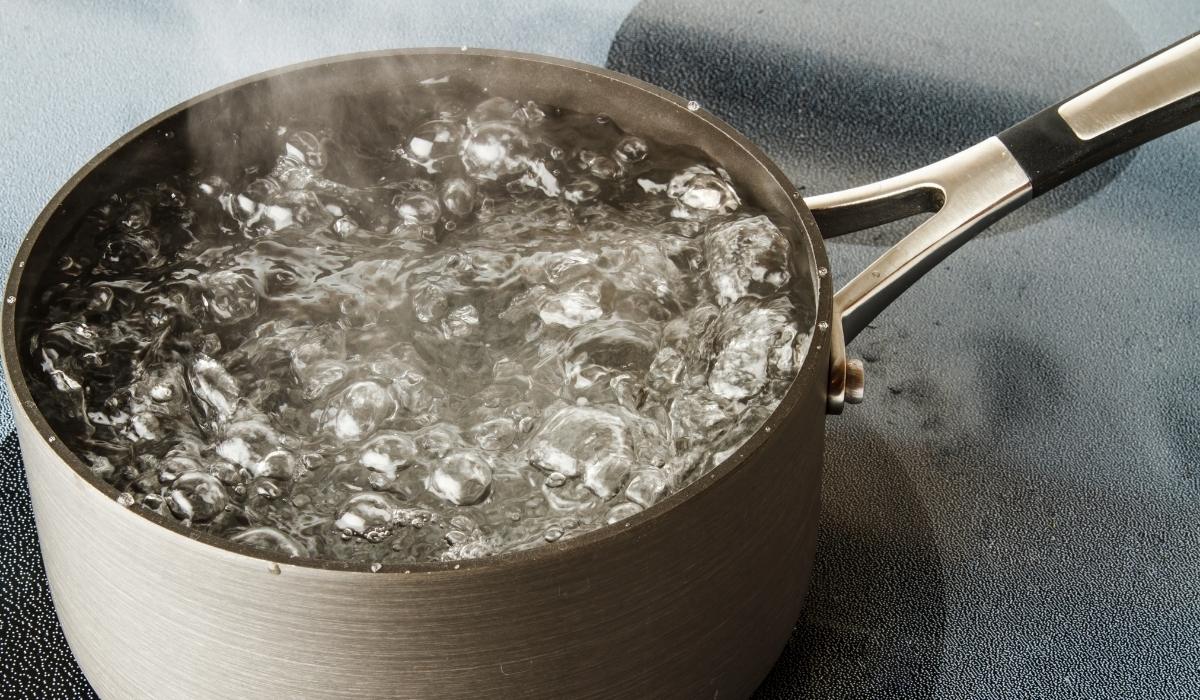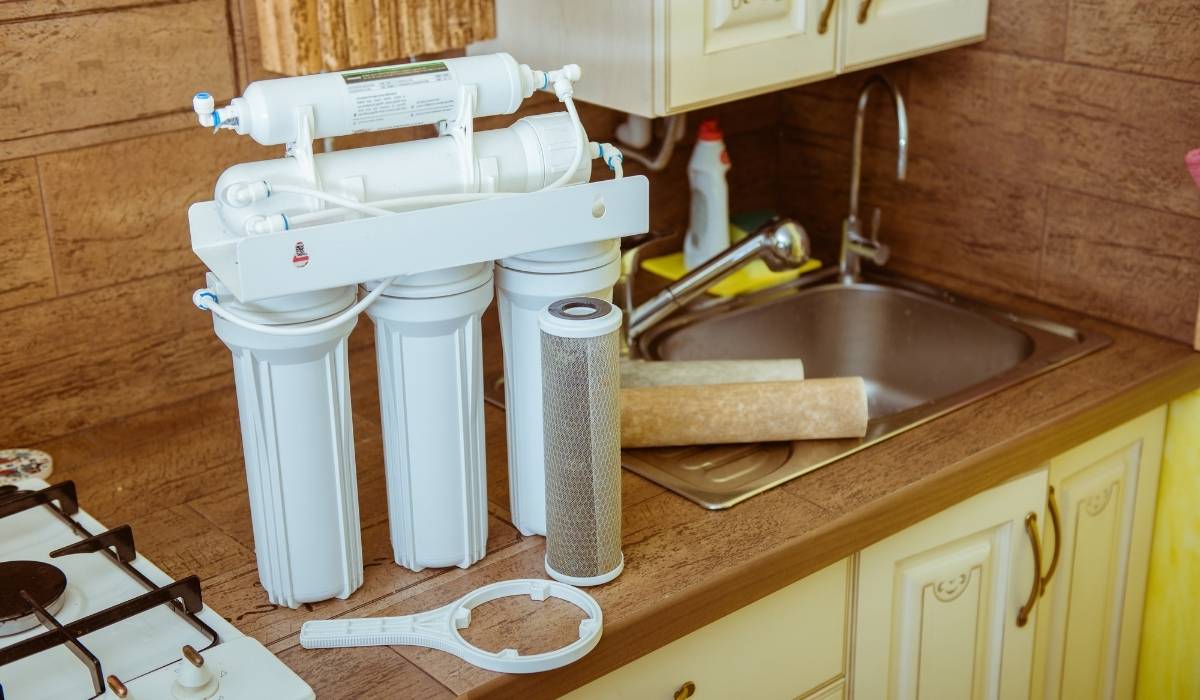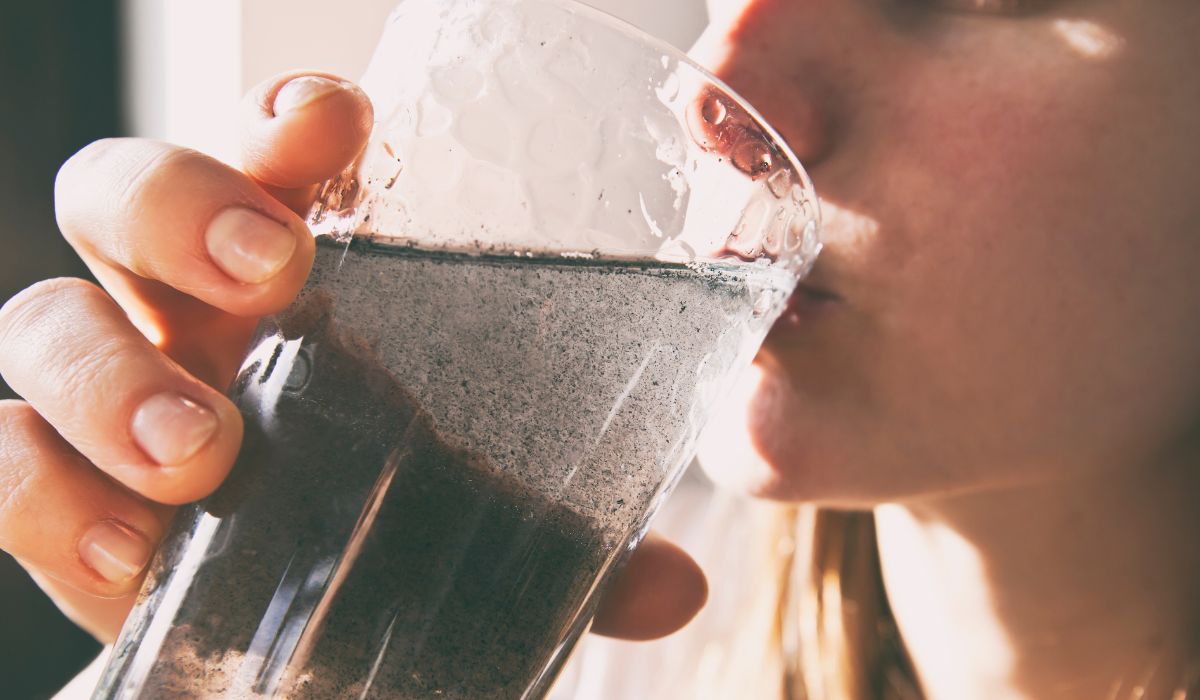- Understanding Physical and Chemical Change
- What is Physical Changes
- What Are Chemical Changes?
- Is Boiling Water a Physical Change?
- Why is Boiling Water Not a Chemical Change?
- Boiling Process Explained
- Different Between Physical And Chemical Changes
- What are physical and chemical properties?
- Classes of Physical Composition:
- Water’s Phase Diagram
- Breakdown Of The Water Phase
- Phase Transition for Boiling Water
- What is boiling
- How Does Boiling Take Place?
- The Factors Influencing the Boiling Point
- Evaporation vs. Boiling
- Distinction Between Evaporation And Boiling:
- Conclusion
In our daily activities as humans, we boil water for cooking, to make it potable for consumption, or some other reason. So, to appreciate this topic, it is essential to know what boiling is all about. Boiling is the process of heating any liquid substance to a certain state where all liquid is converted to vapor. One may be curious to ask whether boiling water is a chemical or physical change.
Boiling water is a physical change because, during the boiling process, the water will only form steam (water); hence, no new substance is formed at the end of the process. The chemical composition and properties of the original substance (water) are not changed. When water boils, steam is developed. This steam can be condensed back into water, so this change is temporary and can be undone.
Changes of state, like melting or boiling, are physical and usually easy to reverse, though the end result may not always look the same as the starting material. Read to the end to learn more about whether the boiling of water undergoes physical or chemical change.
Understanding Physical and Chemical Change
To clearly understand the boiling state of water, we should first know what physical and chemical changes are.
What is Physical Changes
Most physical changes, like melting or boiling, are easy to reverse, even if the end result doesn’t look exactly like the original substance. Physical changes do not result in the formation of new materials, and particles do not change other than through gaining or losing energy.
When melted wax cools, it hardens, but it does not return to its original shape until it is molded or moulded. Although the same particles are present at the microscopic level, they may be in different locations inside the solid.
Ice is made up of water particles. When it melts, the water that forms is composed of the same water particles as when it boils, and the steam is composed of the same water particles as well. Unless there is a chemical change, particles remain the same regardless of whether the stuff is solid, liquid, or gas. Only their configuration, energy, and movement vary.
What Are Chemical Changes?
Chemical change involves molecules breaking and making new bonds, sometimes simultaneously.
When a substance goes through a chemical change, it becomes a new substance with different properties. Compared to physical changes that can be reversed, chemical changes are much harder to change back.
A candle going out is an example of a chemical change. It involves using fire to change the wax and wick into carbon dioxide and light. This process alters not only the material’s appearance but also the molecules that come from the change.
Even though a change in molecular structure is a sign of a chemical change, we don’t see the structure of the molecules changing. By making other observations, we can also tell if a chemical change has happened.
Some chemical changes change the amount of energy, while other changes make new substances with different properties.
Boiling water is a physical change because the gaseous water produced is chemically identical to the liquid water, i.e., both of them have the same molecular structure as the water.
Is Boiling Water a Physical Change?
Boiling water is a physical change. This is true, because When water boils, it turns into gaseous water, which is chemically similar to liquid water because it has the same molecular structure. This is a physical change.
So, the answer is yes. Boiling water is a physical change.
This is because the chemical composition of water does not change during the boiling process.
Furthermore, the process is reversible. Simply by chilling the vapors, liquid water can be obtained.
Why is Boiling Water Not a Chemical Change?
Water boils to form steam, which can then be condensed to form water again, making this change temporary and reversible
In boiling, water transforms into steam, which is also water; hence, no new substance is produced. There is no alteration to the atomic structure, chemical make-up, or physical characteristics of the starting material, water. As a result, boiling water constitutes a change in its physical state.
Boiling Process Explained
In order to appreciate this further, let me explain what happens when water boils.
Heat must come from somewhere else for the water to boil. At first, when you heat water, the temperature goes up.
When the temperature of water rises, the water molecules go up, and they bump into each other. When the temperature is the same as the point at which water boils, none of the water molecules are in the liquid state anymore.
At the boiling point, the heat is used by the water molecules to change their physical state, but the temperature stays the same.
The temperature stays the same during boiling, even though heat is always added. This is because heat is a form of energy, and for water to change from liquid to vapor, it needs a certain amount of energy called the enthalpy of vapourization.
During the boiling process, no chemical change takes place. No new chemical compounds are made. The change can also be rolled back.
Because of these things, we can figure out that boiling water is not a chemical change.
Different Between Physical And Chemical Changes
In physical changes, the shape or appearance of the matter may change, but the subject or substance will not change. That is, no new substance will be formed.
In chemical changes, the substance under investigation will form a new substance at the end of the reaction. That is a transformation from one state of matter to another.
The table below outlines the differences between physical and chemical changes.
| Physical Changes | Chemical Changes |
| Physical changes don’t usually need production energy before they take place. | For chemical energy to occur, production energy in the form of heat may be required. |
| Physical change can only affect the physical appearance of the matter or subject under investigation, such as shape or size, but does not affect the properties of the subject. | A chemical change does change a substance’s physical and chemical properties, as well as its chemical composition. |
| In terms of physical change, even though the molecules of a substance move around when it changes physically, its composition stays the same. | In terms of chemical change, when something goes through a chemical change, its molecular structure changes completely. So, chemical changes mean that new substances will be produced. |
| Physical changes are simple to reverse, which means that the original substance can be returned to its original state before the changes occur. | Chemical changes cannot be reversed, so the original substance cannot be returned to its original state before the change occurred. |
| A physical change may require little or no energy absorption before it takes place. | However, chemical change may require the evolution of energy absorption before it takes place. |
Source:Victoria State Government-Education and Training
What are physical and chemical properties?
Physical properties are substances that can be measured without a single change in their chemical composition.
So, for example, when the size of a substance can be measured and the chemical composition is not altered, you will say it’s a physical composition.
Classes of Physical Composition:
Physical properties are further divided into two classes:
- intensive composition
- extensive composition
Extensive Composition
Extensive composition occurs when the value of any property changes by changing the mass of a substance. So when such a scenario plays out, we will classify it as an extensive property.
Intensive composition
Intensive composition occurs when the value of a property is unaffected by the change in mass. Again, when the above scenario happens, it’s called intensive property. Please note that intensive properties are bulk properties.
For example, when the mass of something changes, the volume of that thing also changes.
Because of this, it is a large property. Temperature, on the other hand, is an intensive property that does not change when the mass changes.
Chemical properties are the things about a substance that you can’t measure without changing its chemical makeup.
Most of the time, scientists look at how a substance reacts with air, water, an acid, a base, or another chemical. They check to see if the substance can go through a chemical change.
For example, we can only study what happens when hydrogen reacts with a substance if the new substance is made up of different parts. If the composition is the same, there is no chemical reaction.
Water’s Phase Diagram
A system is in a phase when it is in a single and transparent state. There is no clear line between the parts of the water phase.
For example, solid ice is one phase, but when some of it melts and stays in balance with water, there are now two phases.
A phase diagram shows the different physical states that a substance can be in at different temperatures and pressures.
Pressure is shown on the y-axis, and temperature is shown on the x-axis of a phase diagram below.
Breakdown Of The Water Phase
The following are the breakdown of the water phase diagram above
Section One
The water phase diagram is broken into three sections or phases.There is only one phase in each place.
- Only ice is present between the y-axis and the ODB.
- Only water vapor exists between the x-axis and the ODC.
- Only liquid water is present in the EDB area.
SectionTwo
Both phases of the lines are in equilibrium.
- OD indicates solid and vapor equilibria.
- DB indicates solid and liquid equilibria.
- DC indicates liquid and vapor equilibria.
Section Three
At the place where three lines meet (D), all three phases coexist, and this temperature and pressure are known as the triple point.
Section Four
A negative slope characterizes the line depicting solid and liquid equilibria. This suggests that the melting point drops as pressure increases.
In addition, this explains why ice is less dense than liquid water.
Section Four
A positive slope characterizes the line expressing liquid and vapor equilibrium. This suggests that the boiling point rises as pressure increases.
Phase Transition for Boiling Water
In the boiling process of water, a transition will occur in the water phase, so at this point, water will transit from liquid to vapor.
So, when all the liquid (water) has not converted from water to vapor at its boiling point, the equilibrium can be represented by the line DC. External heat from other sources will provide energy for phase change.
The transition from liquid to vapor results in an abrupt volume rise.
A sample liquid (phase = 1) is heated at atmospheric pressure. We are making the assumption that air pressure remains constant. The sample’s temperature rises when heated.
When the temperature reaches the boiling point, the liquid begins to transform into vapor, and a balance between the two phases is reached (liquid and vapor).
If you keep heating the liquid, it will turn into vapor, and there will be only one phase again.
What is boiling
Boiling is the process by which a liquid transforms into a vapor when heat is applied to the boiling point. The transition from a liquid to a gaseous phase occurs when the liquid’s vapor pressure equals the air pressure placed on the liquid. Boiling is a physical change in which molecules are not chemically changed.
How Does Boiling Take Place?
When a liquid’s atoms or molecules can spread out sufficiently to transform from a liquid to a gaseous state, bubbles form, and boiling occurs.
The boiling point is the temperature at which a certain liquid begins to boil. For instance, the boiling point of water at 1 atmosphere of pressure is 100 degrees Celsius.
The boiling point of a liquid is influenced by its temperature, air pressure, and vapor pressure. When the air and vapor pressure of a liquid are equal, boiling will commence.
The Factors Influencing the Boiling Point
A liquid’s boiling point is the temperature at which it transforms into vapor. When liquids’ vapor pressure equals the pressure of the surrounding air, they convert into steam.
The pressure that a liquid exerts when its liquid and gaseous phases are in balance is called its vapor pressure.
#1. Pressure
Pressure is the most influential factor in determining a liquid’s boiling point. In an open system, the pressure exerted by the outside environment is most often that of the earth’s atmosphere.
At 100 degrees Celsius, water, for example, achieves the normal atmospheric pressure. This measurement is made at sea level, where the total weight of the atmosphere bears onto the water.
With increasing altitude, water can boil at a lower temperature. At the summit of Mount Everest, the boiling point of water is around 72 degrees Celsius.
#3. Intermolecular connections
When considering different liquids, other factors influence the determination of the boiling point.
The strength of intermolecular bonding is the most critical factor. At sea level, ethyl alcohol has a boiling point of 78.5 degrees Celsius.
It is a liquid at normal temperature, and the molecular bonds are relatively strong. Methyl ether, in contrast, has a “boiling” point of -25 degrees Celsius. Methyl ether at room temperature and sea level is a gas.
#3. Solutes, Solutions, and Solvents
A liquid’s boiling point can be effectively raised by adding another ingredient. The boiling point of water at sea level is 100 degrees Celsius. However, it can be increased by adding a solute such as salt.
A solvent is any substance that dissolves another substance. The dissolving substance is known as the solute.
A solution is formed when a solute is dissolved in a solvent. Typically, a solution boils at a higher temperature than the pure solvent.
Evaporation vs. Boiling
When the liquid temperature exceeds the boiling point of the substance, boiling occurs. Any temperature can result in evaporation. As long as the substance remains liquid at a specific temperature, this condition persists.
According to Greg Bradburn, evaporation occurs swiftly when there is an abundance of energy. When the container is allowed to boil, ice forms at the bottom. The bubbles originate at the container’s base and subsequently ascend to the container’s surface. Bubbles do not form at the bottom and rise to the surface during boiling. Evaporation occurs at a normal temperature and, hence, proceeds more slowly than boiling.
As boiling is a complex physical process, it results in the development of bubbles on the surface of a heated liquid. There are both cavitation and acoustic effects visible.
During evaporation, these kinds of bubbles do not form, and neither does cavitation or a sonic effect.
Distinction Between Evaporation And Boiling:
The following is the microscopic distinction between evaporation and boiling:
During boiling, the velocity of particles increases, and the resulting force separates the particles. The temperature is constant throughout, as is the boiling.
The mobility of the particles differs during evaporation. Few particles move at slower speeds and few at faster speeds.
The surface particles are held in place by the particles beneath the surface layer, while the particles in the intermediate layer are held in place by the forces pressing on the container’s edges.
| Differences’ Causes | Boiling | Evaporation |
| According to the definition | Boiling is the vaporization of a liquid into a gas as a result of continuous heating. It is almost never a natural process. | On the other hand, evaporation is a natural process similar to boiling in that the liquid form turns into a gaseous form as the temperature, pressure, or both increase. |
| According to the occurrence | Boiling is a large phenomenon. | Boiling is a surface phenomenon. |
| According to the temperature | When the temperature hits the boiling point, boiling occurs. | The temperature does not have to reach the boiling point during evaporation. |
| According to bubble formation | The bubble formation in boiling is visible | On the other hand, evaporation does not form bubble |
| According to the energy | Boiling need external energy to occur | Evaporation uses the surrounding atmosphere to occur. |
Conclusion
I hope this writing clarifies if “boiling water is a chemical or physical change.” To recap, boiling water is not a chemical change since the chemical characteristics of water do not change. Boiling changes the physical qualities. There is no new product created while heating.
Ben Jordan has over 10 years of experience working in the water treatment industry and has a bachelors degree in water management. Water is his passion and in his free time he’s an aquarist that maintains large saltwater aquariums.




